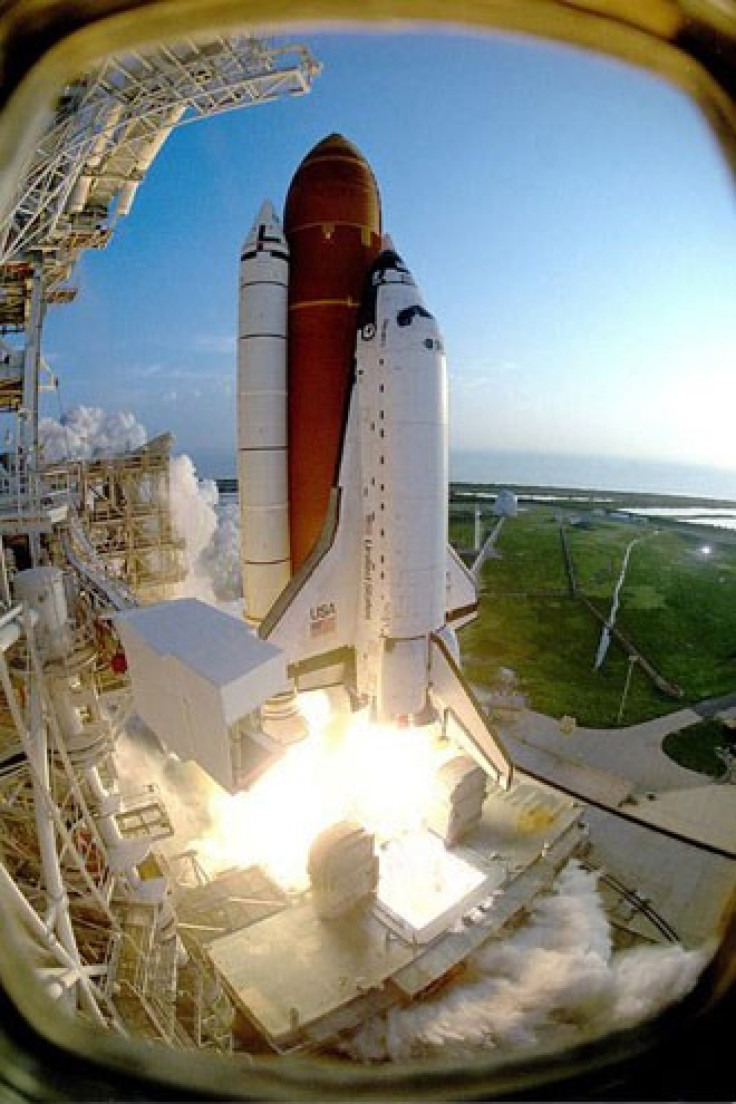NASA Ready For Thursday Discovery Launch

NASA has begun counting down to the launch of Discovery. The shuttle's final mission to the International Space Station is slated for Feb. 24 at 4:50 pm from a seaside pad at the Kennedy Space Center in Florida.
The count began on-time at 3 pm EST on Monday at NASA Kennedy Space Center’s Launch Control Center.
Discovery's final mission was halted four months ago due to a hydrogen gas leak.
The crew members consists of Commander Steve Lindsey, Pilot Eric Boe and Mission Specialists Alvin Drew, Steve Bowen, Michael Barratt and Nicole Stott. They will be accompanied by Robonaut 2 (R2), the first human-like android.
Discovery has flown more than any other shuttle with 38 flights including two return-to-flight missions and the deployment of the Hubble Space Telescope, completed 5,247 orbits, and has spent 322 days in orbit.
Discovery's flight will be the shuttle's 39th and final voyage into space before NASA retires its orbiter fleet later this year. Discovery's launch will occur 6 hours after the planned docking of the European Space Agency's Automated Transfer Vehicle-2 Johannes Kepler to the space station.
The shuttle is in good shape. She's taken us on many amazing journeys throughout the years, and we don't expect this flight to be any different than those. She still has a few more miles before she sleeps, said Jeff Spaulding, NASA test director. The spacecraft has gone into orbit 38 times before. Discovery launched its first mission Aug. 30, 1984.
NASA is predicting good weather and the current weather forcast calling for an 80 percent chance of favorable and acceptable conditions on the launch date.
It's been really nice weather for prelaunch processing and that's going to continue. While forecasts look promising for Thursday, the weather may become more of a concern if Discovery's launch is delayed, said Kathy Winters, shuttle weather officer. Beyond Thursday, forecasts show a chance of showers in the area and low clouds that could affect the shuttle's ability to get off the ground.
The STS-133 crew members arrived Sunday by about 3:45 pm EST at the Shuttle Landing Facility runway at Kennedy Space Center. The crew made brief statements to media and then headed off to begin their prelaunch activities.
Technicians at NASA Kennedy Space Center’s Launch Pad 39A completed pressurizing the tanks on space shuttle Discovery’s Orbital Maneuvering and Main Propulsion Systems on Monday.
The 11-day final flight will involve six-member crew delivering the Permanent Multipurpose Module (PMM) to the station. The PMM was converted from the multi-purpose logistics module Leonardo and will provide additional storage for the station crew. Experiments in such fields as fluid physics, materials science, biology and biotechnology may be conducted inside the module.
The PMM will also carry Robonaut 2, the first human-like robot in space which will become a permanent resident of the station. Cocooned inside an aluminum frame and foam blocks cut out to its shape, R2 is heading to the station inside the Permanent Multipurpose Module in space shuttle Discovery's payload bay.
In addition, the flight will deliver critical spare parts and the Express Logistics Carrier 4, an external platform that holds large equipment. Bowen and Drew will conduct two spacewalks to install new components and perform maintenance.
Steve Bowen replaced Tim Kopra as Mission Specialist 2 after a bicycle injury on Jan. 15 that prohibited Kopra from supporting the launch window. Bowen last flew on Atlantis in May 2010 as part of the STS-132 crew. Flying on the STS-133 mission will make Bowen the first astronaut ever to fly on consecutive missions.
© Copyright IBTimes 2024. All rights reserved.











